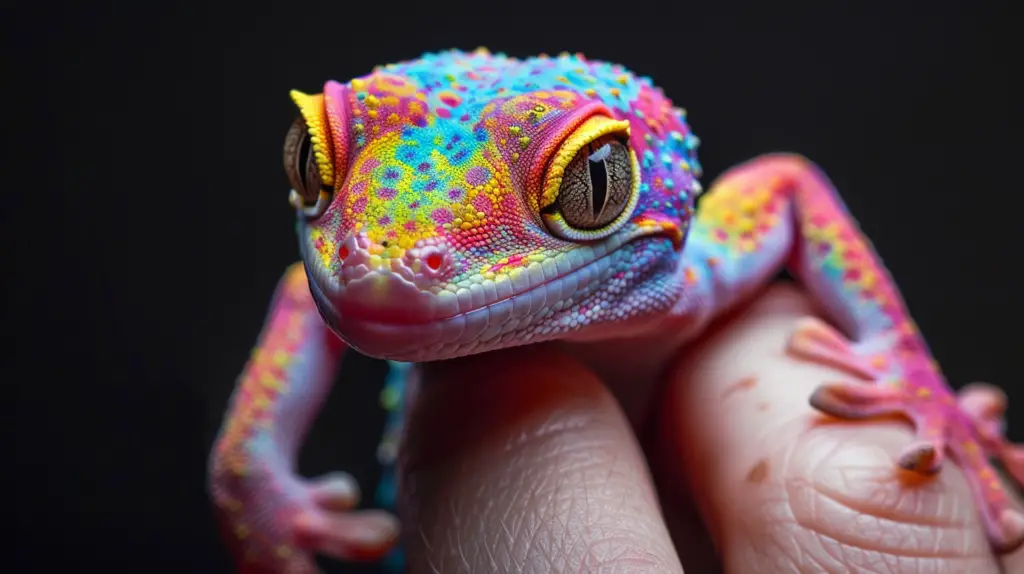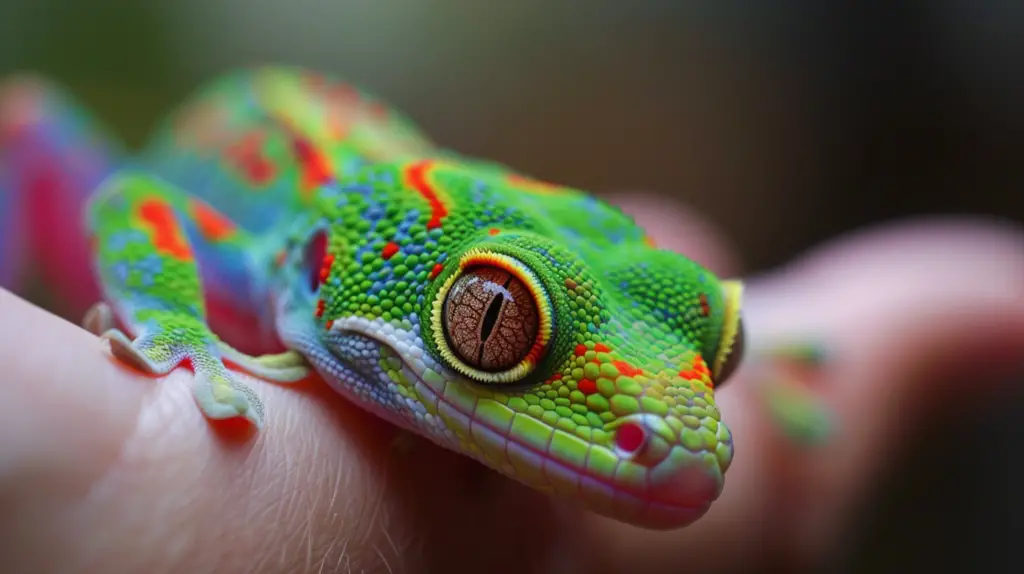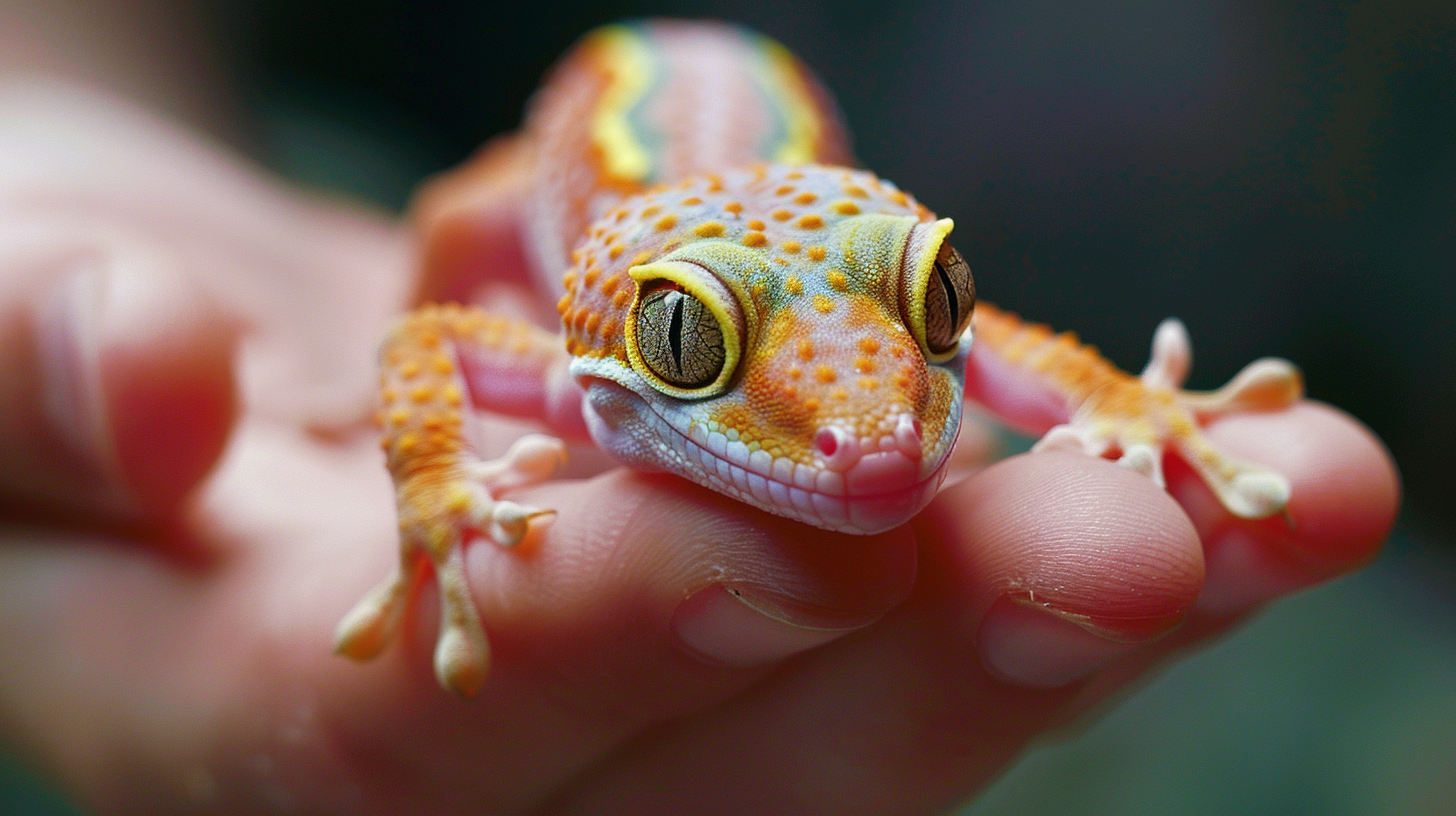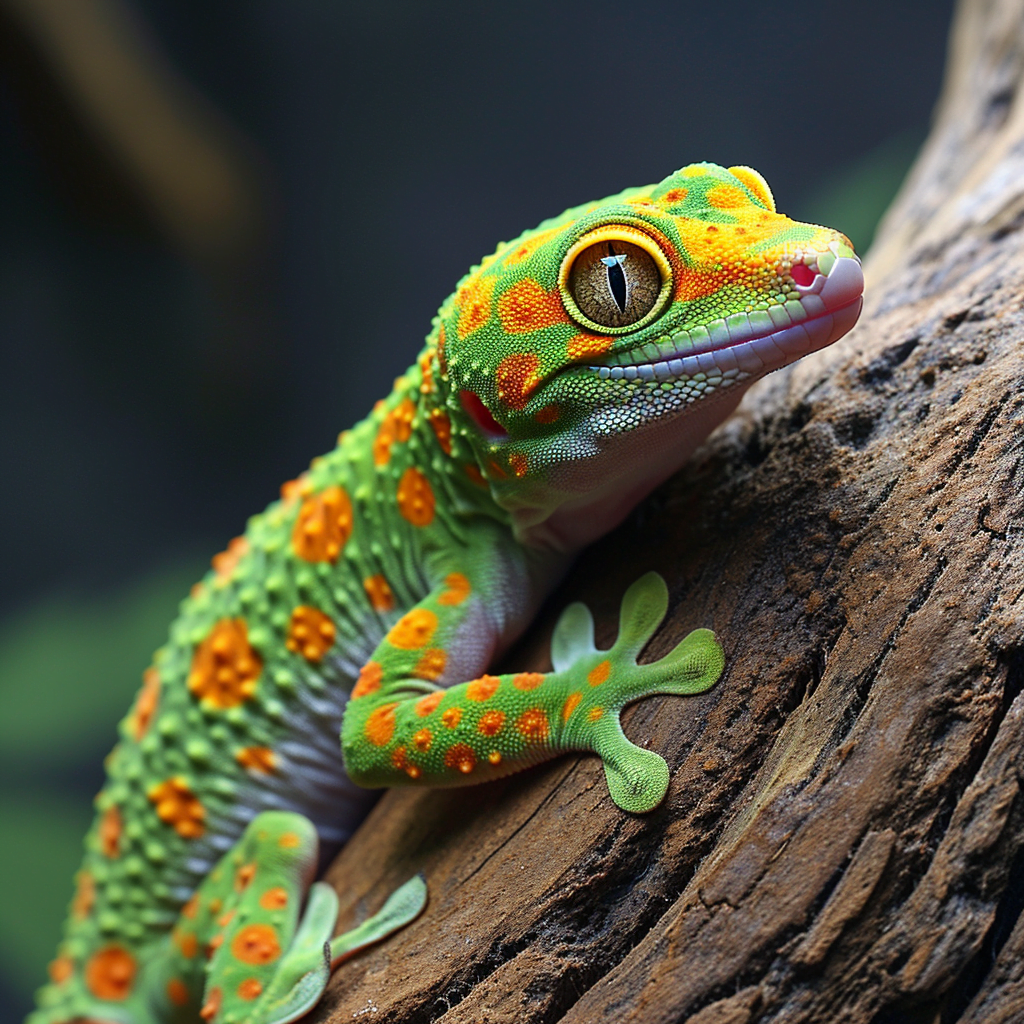Understanding Gecko Behavior
Understanding gecko behavior is crucial for successful gecko handling and taming. This section covers the signs of gecko stress and their communication cues.
Signs of Gecko Stress
Recognizing stress in geckos is vital for their well-being. Stress can manifest in various ways and can be caused by environmental factors, improper handling, or health issues. Here are some common signs of gecko stress:
- Glass Surfing or Glass Dancing: This behavior occurs when a gecko repeatedly climbs the glass walls of its enclosure. It indicates distress or a desire to escape an uncomfortable situation. Factors such as cohabitation stress, mites in the tank, excessive heat, small tank size, or dull tank conditions can trigger this behavior (Terrarium Quest).
- Loss of Appetite: A stressed gecko may refuse to eat. This can be a response to environmental stressors or an indication of underlying health issues.
- Excessive Hiding: While geckos naturally hide, excessive hiding can indicate stress. It’s important to ensure that they have suitable hides and a stress-free habitat (gecko habitat setup).
- Aggressive Behavior: If a normally docile gecko suddenly becomes aggressive, it may be experiencing stress. This can be due to improper handling or environmental changes.
- Weight Loss: Prolonged stress can lead to weight loss and other health complications. Monitoring your gecko’s weight can help identify stress early on.
| Sign of Stress | Possible Causes |
|---|---|
| Glass Surfing | Cohabitation stress, mites, excessive heat, small tank size |
| Loss of Appetite | Environmental stressors, health issues |
| Excessive Hiding | Lack of suitable hides, environmental stress |
| Aggressive Behavior | Improper handling, environmental changes |
| Weight Loss | Prolonged stress, health complications |
For more detailed information on gecko care and habitat setup, visit our gecko pet care page.
Communication Cues in Geckos
Geckos communicate through various cues, which can help you understand their needs and emotions. Here are some common communication cues in geckos:
- Vocalizations: Geckos may make chirping, clicking, or squeaking sounds. These vocalizations can indicate discomfort, stress, or a response to handling.
- Tail Movements: A gecko’s tail can provide insights into its mood. Rapid tail waving or vibrating can indicate stress or aggression. Conversely, slow, deliberate tail movements can signify contentment or curiosity.
- Color Changes: Some geckos can change color based on their mood or environment. A darker coloration can indicate stress or discomfort, while brighter colors may signify happiness or excitement.
- Body Posture: The way a gecko holds its body can also be a communication cue. A gecko that stands tall and alert may be feeling threatened or curious, whereas a gecko that stays low to the ground may be relaxed or hiding.
- Eye Movements: Rapid blinking or closing of the eyes can indicate stress or discomfort. Conversely, a gecko with open, relaxed eyes is likely calm and comfortable.
| Communication Cue | Possible Interpretation |
|---|---|
| Vocalizations | Discomfort, stress, response to handling |
| Tail Movements | Stress, aggression, contentment, curiosity |
| Color Changes | Stress, discomfort, happiness, excitement |
| Body Posture | Threatened, curious, relaxed, hiding |
| Eye Movements | Stress, discomfort, calmness |
Understanding these communication cues can help you build a stronger bond with your gecko and ensure their well-being. For more tips on handling and taming geckos, check out our article on tips for straightening curly hair.
Creating a Gecko-Friendly Environment
Ensuring a stress-free and enriching habitat is vital for the well-being of your gecko. A carefully designed environment can significantly reduce stress and promote positive behaviors, which are essential for successful gecko handling and taming.
Stress-Free Habitat
A suitable habitat for your gecko should cater to its physical and psychological needs. Leopard geckos, for instance, can exhibit signs of stress such as glass surfing or excessive hiding if their environment is not optimal. Creating a stress-free habitat involves several key elements:
- Temperature Regulation: Proper temperature gradients are crucial. The tank should have a warm side and a cool side to allow the gecko to thermoregulate. Ideal temperatures range from 88-92°F on the warm side and 75-80°F on the cool side.
- Humidity Levels: Maintain moderate humidity levels between 30-40%. Excessive humidity can lead to respiratory issues, while low humidity can cause shedding problems.
- Lighting: Use low-intensity UVB lighting to mimic natural light cycles, but avoid overly bright lights that can cause stress.
- Tank Size and Structure: A spacious tank with dimensions of at least 20 gallons for a single gecko is recommended. Ensure the tank has a secure lid to prevent escapes.
Here is a table summarizing the optimal habitat conditions for a leopard gecko:
| Aspect | Optimal Range |
|---|---|
| Warm Side Temp | 88-92°F |
| Cool Side Temp | 75-80°F |
| Humidity | 30-40% |
| Tank Size | Minimum 20 gallons |
Importance of Suitable Hides
Providing suitable hides is essential for the mental and physical health of your gecko. Hides offer a sense of security and help reduce stress, making them a crucial component of a gecko-friendly environment.
- Multiple Hides: Offer at least two hides per gecko, one on the warm side and one on the cool side of the tank. This allows the gecko to feel secure while thermoregulating.
- Moist Hide: A moist hide is particularly important for aiding in the shedding process. This hide should be placed on the warm side of the tank and kept slightly damp.
- Hide Design: Ensure hides are of appropriate size and made from safe materials. They should be easy to clean and provide ample space for the gecko to move comfortably.
Excessive hiding beyond the initial acclimation period may indicate environmental issues or health problems, such as low temperatures or illness (Terrarium Quest). Monitoring your gecko’s behavior and adjusting the habitat as needed can help ensure a positive environment.
To further enhance your gecko’s habitat and overall well-being, consider exploring more about gecko habitat setup and types of geckos as pets to better understand their specific needs.

Building Trust with Your Gecko
Establishing trust with your gecko is a gradual process that requires patience and understanding. By following a structured approach, you can ensure a positive experience for both you and your gecko.
Initial Acclimation Period
When you first bring your gecko home, it is crucial to allow them time to acclimate to their new environment. According to Quora, leopard geckos should not be handled or disturbed for at least two weeks. This period is essential for their well-being, especially for very young geckos, as they are delicate and can be negatively impacted by stress.
During this initial acclimation period, ensure that your gecko has a stress-free habitat with suitable hides. Avoid unnecessary interactions and provide a calm environment to help them settle in. If your gecko hasn’t eaten within the two-week period, handling should be avoided, and a vet appointment should be considered.
| Time Period | Activity |
|---|---|
| First 2 Weeks | No handling, allow acclimation |
| Post 2 Weeks | Gradual introduction to your presence |
Gradual Introduction to Handling
After the initial two-week waiting period, you can begin the process of introducing yourself to the gecko. Start by placing your hand in the enclosure every night for a few minutes. This allows the gecko to get used to your scent and presence. Consistency in handling is key to successful taming.
It’s important to handle your gecko no more than twice a week initially. Overhandling can cause stress and negatively impact their health. Let the gecko decompress for a month without handling, except for necessary tasks like cleaning the habitat (Quora).
To make the handling process more positive, consider tong-feeding your gecko. This helps them associate your hands with a rewarding experience. Gradually increase the duration and frequency of handling sessions after the initial month of rest.
| Handling Frequency | Recommendation |
|---|---|
| Initial Period (2 weeks) | No handling |
| Post-Acclimation (1 month) | Handle no more than twice a week |
| After 1 Month | Gradual increase in handling sessions |
Building trust with your gecko takes time and gentle interaction. Providing a suitable environment, patience, and understanding is essential for helping them adjust to their new surroundings and the presence of humans (Quora). With consistency and care, most geckos can become comfortable with handling and being around people. For more detailed guidance on gecko pet care and feeding geckos as pets, explore our related articles.
Proper Handling Techniques
Handling geckos properly is crucial for their well-being and helps in building a trusting relationship. Understanding the right techniques ensures that both the gecko and the handler remain safe and stress-free.
Supporting Limbs and Tail
When handling a gecko, it is essential to support its feet, body, and tail. This helps the gecko feel secure and prevents unnecessary stress. Geckos have detachable tails, so grabbing or pulling the tail can cause it to drop, which is a defense mechanism. According to ReptiFiles, the best way to start is with 5-minute handling sessions every other day, gradually increasing the length and frequency.
| Handling Session | Duration (Minutes) | Frequency |
|---|---|---|
| Initial Sessions | 5 | Every Other Day |
| Gradual Increase | 10-15 | Daily |
Supporting all the limbs is also crucial. Different sizes of lizards require different handling techniques. Smaller geckos can be gently grasped in one hand, while larger ones may need support for each set of legs (LLL Reptile). Ensuring that the gecko feels secure reduces the chances of stress and makes the handling experience positive.
Recognizing Individual Temperaments
Each gecko has its own temperament, and recognizing this is key to successful handling. Some geckos may be more docile and easier to handle, while others may be more skittish and require more time to acclimate to human interaction. Young geckos, for instance, are easily scared and are prone to dropping their tails.
Understanding individual temperaments involves observing the gecko’s behavior during initial handling sessions. Signs of stress, such as increased hiding or loss of appetite, indicate that the gecko may need more time to acclimate. Gradual desensitization to handling helps in reducing stress.
For more detailed information on gecko pet care and gecko habitat setup, visit our related articles. Ensuring a stress-free environment and recognizing individual temperaments are essential steps in successful gecko handling and taming.
Handling Challenges
Handling geckos can be a rewarding experience, but it also comes with its own set of challenges. Understanding these challenges is crucial for ensuring the well-being of your gecko and maintaining a positive handling experience.
Tail Autotomy and Defense Mechanisms
One of the most unique defense mechanisms of geckos is tail autotomy. This survival tactic allows a gecko to drop its tail when threatened. While it can be alarming for a gecko owner, it’s important to know that this is a natural response and the tail will eventually regenerate (LafeberVet). However, it’s best to minimize stress to avoid this occurrence.
Geckos may also display other defense behaviors, such as:
- Hissing: A sign of distress or warning.
- Biting: Though not common, a scared or threatened gecko might bite.
- Tail Wagging: Indicates agitation or a readiness to drop the tail.
Recognizing these behaviors can help in handling your gecko more effectively and reducing stress.
Dealing with Aggression and Stress
Aggression and stress in geckos can be triggered by various factors, including improper habitat conditions, cohabitation issues, or overhandling. Recognizing the signs of stress and aggression is key to addressing these issues.
- Glass Surfing: This behavior, also known as glass dancing, indicates that the gecko is trying to escape an uncomfortable environment (Terrarium Quest).
- Hiding: Excessive hiding can be a sign of stress or illness.
- Refusal to Eat: A stressed gecko may lose its appetite, which can lead to health issues if not addressed promptly (LLL Reptile).
To mitigate these problems, ensure your gecko’s habitat is stress-free. This includes providing suitable hides, maintaining proper temperature and humidity levels, and avoiding cohabitation unless necessary.
Table: Common Signs of Stress and Aggression in Geckos
| Behavior | Possible Cause |
|---|---|
| Glass Surfing | Stress, uncomfortable environment |
| Hiding | Stress, illness |
| Refusal to Eat | Stress, underlying health issues |
| Hissing | Distress or warning |
| Biting | Fear or threat |
| Tail Wagging | Agitation, readiness to drop tail |
For more information on gecko care, visit our section on gecko pet care.
By understanding and addressing the challenges of handling geckos, you can create a positive and stress-free experience for both you and your pet. Always be patient and attentive to your gecko’s needs, and remember that each gecko has its own unique temperament and handling preferences.

Establishing Handling Guidelines
Proper handling of geckos is essential for building trust and ensuring their well-being. This section will cover the recommended frequency and duration of handling sessions, as well as tips for ensuring positive handling experiences.
Handling Frequency and Duration
Handling frequency and duration are critical factors in the successful taming of geckos. Overhandling can lead to stress and health issues, while underhandling may prevent the gecko from becoming accustomed to human interaction.
Handling Frequency
It is advised to limit handling sessions to no more than twice a week initially, ensuring that the gecko has ample time to acclimate to its new environment (Quora). After the initial acclimation period, handling can be gradually increased. Spacing out handling sessions and giving the gecko a few days to decompress between interactions can help reduce stress levels (Quora).
| Handling Schedule | Frequency |
|---|---|
| Initial Acclimation | 0 times per week for 2 weeks |
| Post-Acclimation (Month 1) | 1-2 times per week |
| Gradual Increase | 2-3 times per week |
Handling Duration
When handling geckos, it is recommended to keep sessions short, ideally lasting no more than 15 minutes. Prolonged handling can cause the gecko to get too cold, which can be harmful. Ensuring the gecko can tap into the handler’s body heat during these sessions can help maintain a comfortable temperature.
Ensuring Positive Handling Experiences
Creating positive handling experiences is key to successful gecko taming. Each interaction should be calm and gentle to prevent stressing the gecko.
Initial Acclimation Period
After bringing a gecko home, it should be left undisturbed for at least two weeks to adjust to its new surroundings (Quora). During this time, the gecko should only be handled for necessary tasks like cleaning the habitat. Introducing yourself to the gecko by placing your hand in the enclosure for a few minutes each night can help it get used to your scent and presence (ReptiFiles).
Gradual Introduction to Handling
After the initial acclimation period, handling should be introduced gradually. Tong-feeding the gecko can help it associate your hands with positive experiences (Quora). Consistency in handling is crucial for building trust. Every interaction should be calm and reassuring to make the gecko feel secure.
| Handling Technique | Steps |
|---|---|
| Initial Acclimation | 1. Leave gecko undisturbed for 2 weeks 2. Place hand in enclosure nightly for a few minutes |
| Gradual Introduction | 1. Start with short handling sessions 2. Tong-feed to build positive associations 3. Increase handling frequency gradually |
For more insights on creating a stress-free environment and setting up suitable hides, visit our article on gecko habitat setup. Additionally, learn about the best feeding practices for geckos to ensure their overall well-being.


